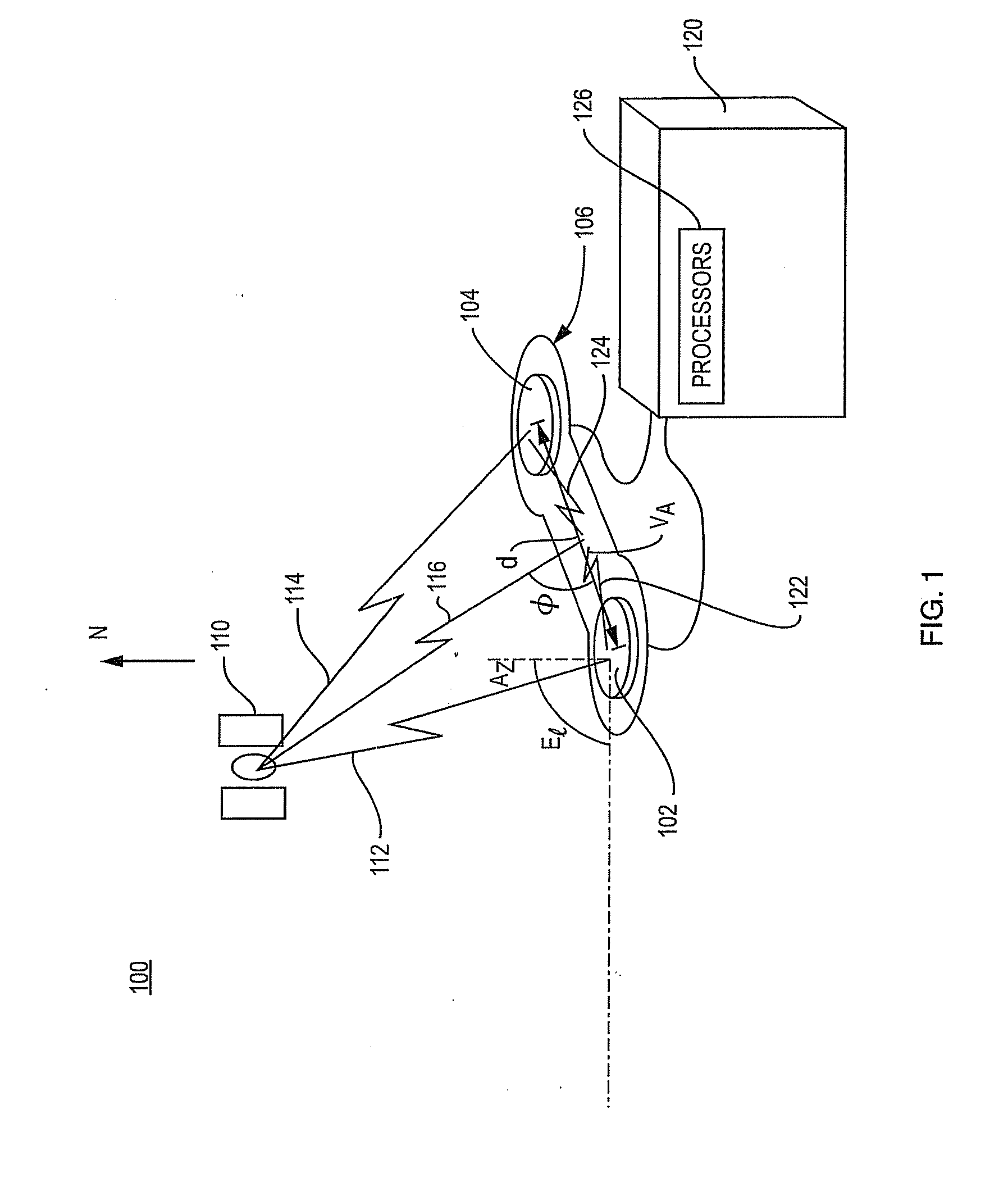Ultra short baseline GNSS receiver
a receiver and ultra-short technology, applied in the field of global navigation satellite systems, can solve the problems that the system must still engage in processing intensive and time-consuming operations to solve the problem of 2-dimensionality
- Summary
- Abstract
- Description
- Claims
- Application Information
AI Technical Summary
Benefits of technology
Problems solved by technology
Method used
Image
Examples
Embodiment Construction
[0015]FIG. 1 is a schematic illustration of an ultra-short baseline system 100 that receives GNSS satellite signals transmitted by a GNSS satellite 110. More specifically, the system 100 of FIG. 1 includes an antenna structure 106106 that consists of dual antennas 102 and 104 that are mounted on a rigid frame 106 and a receiver 120 with one or more processors 126 that processes the signals received by the antennas. The antennas reside a distance “d” apart, where d is constrained to be less than 1 wavelength of the GNSS satellite carrier signals of interest. The spacing d may, for example, be less than 19 cm for a system that operates with GPS L1 satellite carrier signals.
[0016]The signals from the GNSS satellite 110 are represented schematically as signal path 112, which is received by antenna 102, and signal path 114, which is received by antenna 104. The lengths of the two paths differ because of the different locations of the respective antennas. The signals received by the dual ...
PUM
 Login to View More
Login to View More Abstract
Description
Claims
Application Information
 Login to View More
Login to View More - R&D
- Intellectual Property
- Life Sciences
- Materials
- Tech Scout
- Unparalleled Data Quality
- Higher Quality Content
- 60% Fewer Hallucinations
Browse by: Latest US Patents, China's latest patents, Technical Efficacy Thesaurus, Application Domain, Technology Topic, Popular Technical Reports.
© 2025 PatSnap. All rights reserved.Legal|Privacy policy|Modern Slavery Act Transparency Statement|Sitemap|About US| Contact US: help@patsnap.com



